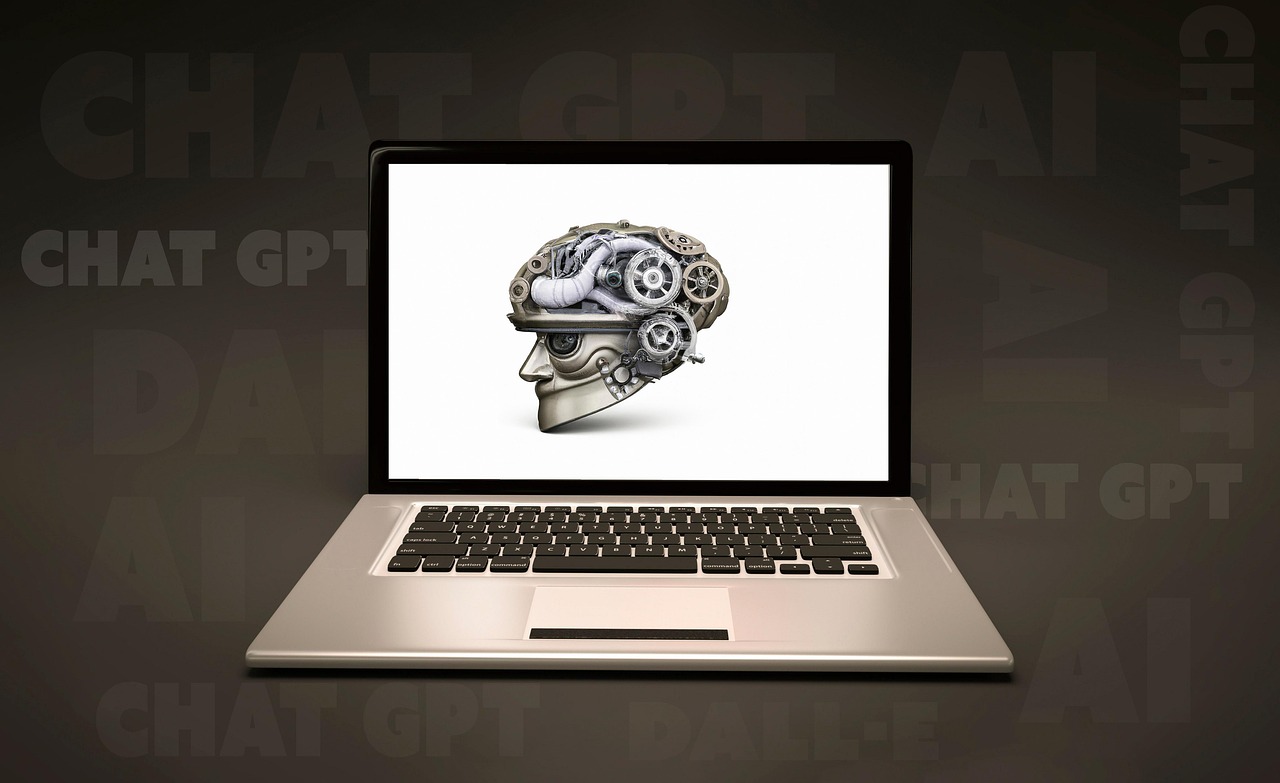The relentless march of Artificial Intelligence (AI) continues to reshape our world, impacting everything from healthcare and finance to entertainment and transportation. But behind the headlines and groundbreaking applications lies a complex and dynamic field of research, constantly pushing the boundaries of what’s possible. This blog post delves into the world of AI research, exploring its key areas, ongoing challenges, and future directions. Whether you’re an aspiring AI researcher, a seasoned professional, or simply curious about this transformative technology, this guide offers valuable insights into the engine driving the AI revolution.
Key Areas of AI Research
AI research is a vast and multifaceted field, encompassing a wide range of disciplines and approaches. Understanding its core areas is crucial for navigating this complex landscape.
Machine Learning
Machine Learning (ML) is arguably the most prominent area of AI research. It focuses on developing algorithms that allow computers to learn from data without explicit programming.
- Supervised Learning: Training models on labeled data to predict outcomes. For example, predicting whether an email is spam based on its content and sender information.
- Unsupervised Learning: Discovering patterns and structures in unlabeled data. Examples include customer segmentation based on purchasing behavior and anomaly detection in network traffic.
- Reinforcement Learning: Training agents to make decisions in an environment to maximize a reward. This is used in robotics, game playing (like AlphaGo), and autonomous driving.
Practical Example: Consider a retail company using machine learning to predict future sales. They could use supervised learning techniques, feeding the algorithm historical sales data (including promotions, seasonality, and economic indicators) to train a model that predicts future demand for specific products. This allows them to optimize inventory management and minimize waste.
Natural Language Processing
Natural Language Processing (NLP) focuses on enabling computers to understand, interpret, and generate human language.
- Sentiment Analysis: Determining the emotional tone of a text, used for brand monitoring and customer feedback analysis.
- Machine Translation: Automatically translating text from one language to another, improving global communication. Google Translate is a prime example.
- Text Summarization: Condensing large amounts of text into concise summaries, saving time and improving information accessibility.
- Question Answering: Developing systems that can answer questions posed in natural language. Think of chatbots and virtual assistants.
Practical Example: Imagine a hospital using NLP to analyze patient notes. By extracting key information such as symptoms, diagnoses, and medications, NLP can help doctors quickly identify potential health risks and improve the efficiency of patient care.
Computer Vision
Computer Vision aims to enable computers to “see” and interpret images and videos, much like humans do.
- Object Detection: Identifying and locating objects within an image or video. Used in self-driving cars, security systems, and medical imaging.
- Image Recognition: Classifying images based on their content. For example, identifying different breeds of dogs in photographs.
- Image Segmentation: Dividing an image into multiple regions or objects. Used in medical image analysis and autonomous navigation.
- Facial Recognition: Identifying individuals based on their facial features. Used in security systems and social media applications.
Practical Example: Consider a manufacturing plant using computer vision to inspect products for defects. By automatically analyzing images of the products on the assembly line, the system can identify flaws and alert quality control personnel, reducing waste and improving product quality.
Robotics
Robotics research focuses on designing, constructing, operating, and applying robots. It often integrates elements from machine learning, computer vision, and control theory.
- Autonomous Navigation: Enabling robots to navigate complex environments without human intervention. Used in self-driving cars and warehouse automation.
- Human-Robot Interaction: Designing robots that can interact safely and effectively with humans. Used in collaborative robots (cobots) and assistive technologies.
- Robot Learning: Using machine learning to train robots to perform tasks. This includes learning motor skills, adapting to new environments, and collaborating with humans.
Practical Example: In agriculture, robots equipped with computer vision and machine learning can be used to identify and harvest ripe crops. These robots can navigate fields autonomously, picking fruits and vegetables with greater speed and accuracy than human laborers, reducing labor costs and improving efficiency.
Current Trends in AI Research
The field of AI is rapidly evolving, with new trends emerging constantly. Staying abreast of these trends is crucial for researchers and practitioners alike.
Explainable AI (XAI)
As AI systems become more complex, it’s increasingly important to understand how they make decisions. Explainable AI (XAI) focuses on developing methods to make AI models more transparent and interpretable.
- Benefits of XAI:
Improved trust in AI systems.
Enhanced accountability and fairness.
Better debugging and error analysis.
Increased adoption of AI in critical applications.
Example: In the medical field, XAI can help doctors understand why an AI system made a particular diagnosis, increasing their confidence in the system and allowing them to make more informed treatment decisions.
Federated Learning
Federated Learning enables training AI models on decentralized data sources without directly accessing the data. This is particularly useful when dealing with sensitive or private data.
- Key Features:
Data remains on user devices or local servers.
Models are trained collaboratively across multiple devices.
Improved privacy and security.
Reduced communication costs.
Example: Imagine training a model to predict customer behavior. With Federated Learning, the model can be trained on data stored on individual user devices without ever transferring the data to a central server. This protects user privacy and reduces the risk of data breaches.
Generative AI
Generative AI focuses on developing models that can generate new content, such as images, text, and audio.
- Applications:
Creating realistic images and videos.
Generating human-like text.
Composing music and creating art.
Designing new products and materials.
Example: DALL-E 2 and Stable Diffusion are examples of generative AI models that can create realistic images from text descriptions. These models have the potential to revolutionize fields such as art, design, and advertising.
Challenges in AI Research
Despite its remarkable progress, AI research still faces significant challenges.
Data Scarcity and Bias
Many AI algorithms require vast amounts of data to train effectively. Furthermore, biases in the training data can lead to unfair or discriminatory outcomes.
- Addressing Data Scarcity:
Data augmentation techniques.
Transfer learning.
Few-shot learning.
- Mitigating Bias:
Careful data collection and cleaning.
Bias detection and correction algorithms.
Fairness-aware model training.
Computational Resources
Training complex AI models can require significant computational resources, including powerful GPUs and large amounts of memory.
- Strategies for Reducing Computational Costs:
Model compression techniques.
Distributed training.
Cloud computing.
Efficient hardware architectures.
Ethical Considerations
AI raises important ethical considerations, including privacy, fairness, accountability, and the potential for misuse.
- Ethical Guidelines:
Develop and adhere to ethical guidelines for AI research and development.
Promote transparency and explainability in AI systems.
Ensure fairness and avoid discrimination.
Protect user privacy and data security.
Consider the potential social and economic impacts of AI.
The Future of AI Research
The future of AI research is bright, with many exciting possibilities on the horizon.
Artificial General Intelligence (AGI)
AGI, or strong AI, refers to AI systems that can perform any intellectual task that a human being can. While AGI remains a long-term goal, research is ongoing in areas such as:
- Common-sense reasoning.
- Transfer learning.
- Meta-learning.
Neuro-Symbolic AI
Neuro-Symbolic AI combines the strengths of neural networks (which excel at pattern recognition) with symbolic reasoning (which provides logical deduction and explainability). This approach aims to create AI systems that are both powerful and interpretable.
Quantum AI
Quantum AI explores the use of quantum computers to accelerate AI research. Quantum computers have the potential to solve certain problems much faster than classical computers, which could lead to breakthroughs in areas such as:
- Drug discovery.
Materials science.
* Optimization.
Conclusion
AI research is a dynamic and transformative field that continues to shape our world. By understanding its key areas, current trends, challenges, and future directions, we can better harness the power of AI to solve pressing problems and improve the human condition. As AI technologies continue to evolve, it’s essential to prioritize ethical considerations, promote transparency, and ensure that AI is used for the benefit of all. The journey of AI research is far from over, and the possibilities are truly limitless.




